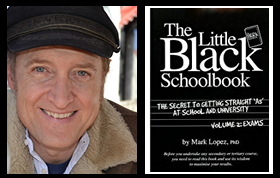Dr Mark’s The Meaning in a Nutshell
Khaled Hosseini, The Kite Runner (2003)
Khaled Hosseini’s novel The Kite Runner (2003) is intended to educate American and other Western readers about Afghanistan and its people while entertaining them with a dramatic novel about a family of Afghan refugees who escape war and oppression and settle in the United States.
Hosseini is himself an Afghan refugee who settled in the United States who became acutely aware that Afghanistan was mostly known in the West for negative reasons, such for its seemingly incessant wars, tribalism, and religious fundamentalism. Hosseini sought to counter this perception by introducing Western readers to the Afghanistan that existed before the Communist takeover of 1978, which is before the Soviet invasion of 1979, and before the Taliban regime of 1996 to 2001. The author suggests that the true Afghanistan can be found in expressions of the Afghan national character, culture, society, religion and politics of this earlier period. Consequently, he positions the audience to be critically disposed towards the communist and Taliban regimes as historical aberrations that wrought havoc on this nation. In this context, considerable space in the novel is devoted to criticising the communist regime and to vilifying the Taliban.
In addition, by generating understanding of, and affection for, the Afghan people, Hosseini is also attempting to generate sympathy for Afghan refugees, describing their suffering and hardship and showing them to be worthy of sympathy and support from the West.
While discussing the Afghan national character, culture, society, religion and politics, Hosseini deliberately draws attention to the impressive aspects of this nation, such as the value these people place on courage. Yet he also deals with dimensions that have caused concern in the West, such as double standards in sexual morality regarding the treatment of women. Hosseini also looks at problems in Afghanistan that are seen by many to have parallels in the West, such as the existence of racism and sectarian hatred. When dealing with these topics, Hosseini shows sensitivity regarding the injustices experienced by Afghan women, and he makes a plea for the tolerance of religious and ethnic minorities in a manner that is as relevant to Afghan society as it is to any other society with similar problems.
Hosseini’s novel, while making its numerous political and historical points, centres on the character Amir’s growth from a somewhat troubled boyhood to a somewhat troubled manhood, until Amir bravely confronts his psychological demons by engaging in heroic deeds to right the wrongs of the past. This allows Amir to achieve a more self-assured and well-adjusted degree of adult maturity by the close of the novel. While doing so, the story explores intersecting moral and psychological themes regarding the duties of friendship, the importance of courage, the need to confront bullies, as well as exploring the intolerable burden of guilt over sin and the psychological healing power of redemption through good deeds. These issues are faced by Amir while he also deals with a troubled father−son relationship that highlights the frustration of a son who is trying to live up to his heroic father’s high standards.
Student resources by Dr Mark Lopez
© Mark Lopez 2021 All RIGHTS RESERVED
The purpose of the concise notes of Dr Mark’s The Meaning in a Nutshell is to provide much needed help to students seeking to unlock the meaning of the texts with which they have to deal. (More elaborate notes are provided in lessons as part of my private tutoring business.)
Subject: The Kite Runner meaning, The Kite Runner themes, The Kite Runner analysis, The Kite Runner notes
